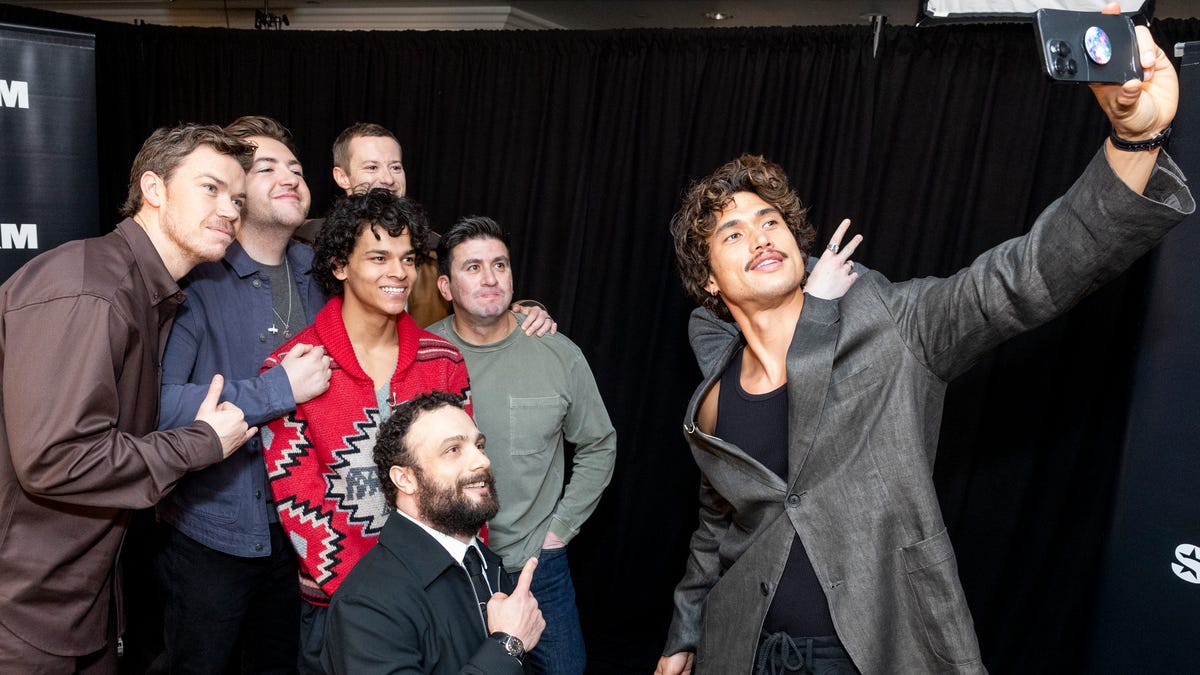Where you’ve seen the young Hollywood cast of ‘Warfare’Movies
Author: business
-
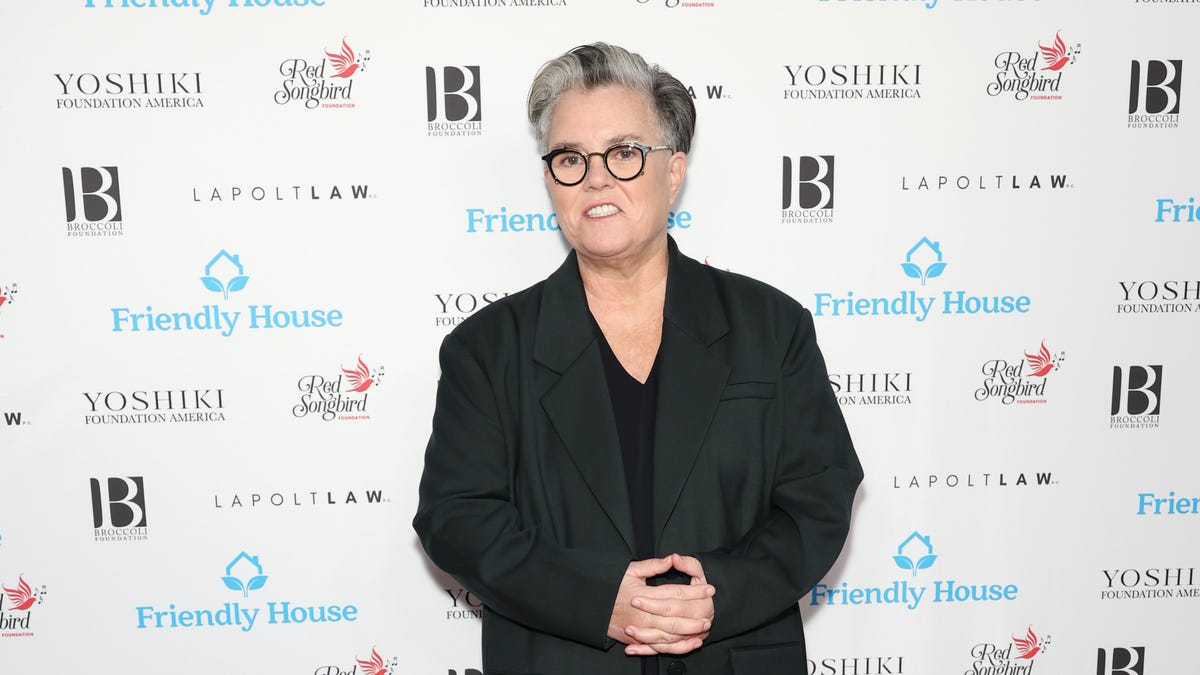
Rosie O’Donnell’s daughter Chelsea wants to take birth mom’s name
Rosie O’Donnell says she’s moved to Ireland because of Trump Presidency
Comedian and actor Rosie O’Donnell took to TikTok to reveal that she has moved to Ireland with her daughter Dakota.
unbranded – Entertainment
Rosie O’Donnell’s estranged daughter Chelsea wants to change her name following media attention surrounding her legal troubles.
Chelsea O’Donnell, 27, the oldest daughter of the comedian, filed to change her name in January, according to Wisconsin Circuit Court records viewed by USA TODAY Thursday. The Daily Mail was first to report the news.
A rep for Rosie O’Donnell declined to comment. On Sunday, the former talk-show host shared a lengthy, heartfelt note about the breakdown of her and Chelsea’s relationship and the media attention surrounding Chelsea’s legal trouble on Substack.
The former “The View” host said she got her daughter’s permission to post it, and confirmed Chelsea’s request for a name change. “she wishes to change her last name / to her birth moms maiden name,” the poetic note read. “doesn’t make sense to me / I am not her.”
According to Marinette County, Wisconsin, jail records viewed by USA TODAY, Chelsea O’Donnell was booked on Nov. 18 following arrests in September and October for charges including allegedly maintaining a “drug trafficking place,” neglecting a child, domestic abuse and possessing methamphetamine, THC, drug paraphernalia and an illegally obtained prescription.
Last month, the 27-year-old was sentenced to six years probation for three counts of possessing methamphetamine, jumping bail and resisting or obstructing an officer, according to People, Page Six and Entertainment Weekly.
Rosie O’Donnell, who has commented before on Chelsea’s run-ins with law enforcement, wrote that her daughter has expressed frustration with her lack of privacy. “what would I say that she will be ok with me sharing,” she wrote. “she doesn’t like it when the press shows up at some hearing.”
The former talk show host also addressed remarks saying she should talk about her daughter more or that she “should have done something else” to help her. “every adoption story is complicated,” she wrote.
“her story is her own to tell,” Rosie continued, adding that Chelsea’s “journey” has been “made public by a series of bad decisions on everyones part when she was a young teen.”
O’Donnell has five children and shares 27-year-old Chelsea with ex-wife Kelli Carpenter.
Chelsea O’Donnell made headlines as a teen in 2015 when she ran away from her New York home and was found a week later in New Jersey. As an 18 year old, she moved in with her biological mother in Wisconsin. Now, she is a mother to four children, with her youngest being born last fall, per Rosie O’Donnell’s Oct. 30, 2023, Instagram post.
Rosie O’Donnell said Chelsea is “doing so well now in spite of the tabloid fodder,” she added. “she has the right to do it without strangers judgement” and “i wish i could delete my fame for her.”
She continued: “we raise them we do r (sic) best (but) we all fail in so many ways. but rain or shine same name or not that’s my girl.”
If you or someone you know is struggling with mental and/or substance use disorders, you can call the Substance Abuse and Mental Health Services Administration’s free and confidential treatment referral and information service at 1-800-662-HELP (4357). It’s available 24/7 in English and Spanish (TTY: 1-800-487-4889).
Contributing: KiMi Robinson
-
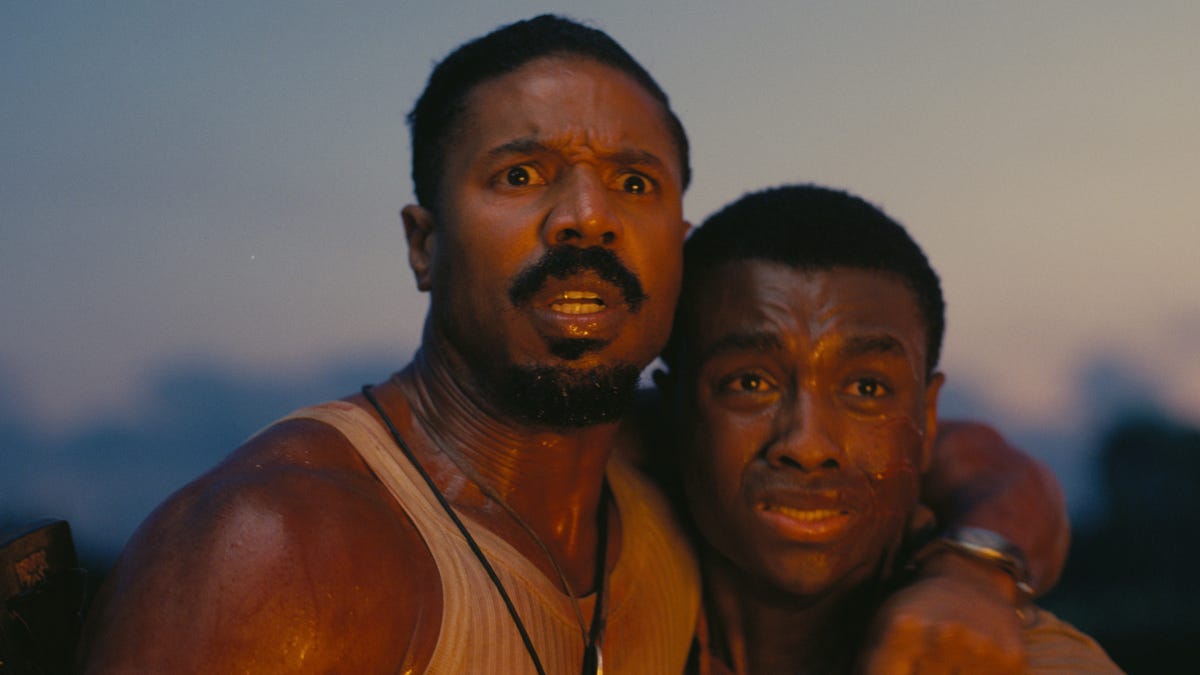
Michael B. Jordan faces off with vampires
‘Sinners’: A vampire wants to crash Michael B. Jordan’s party
Cornbread (Omar Miller) isn’t acting like his old self when trying to re-enter the party in Ryan Coogler’s period horror movie “Sinners.”
Give Ryan Coogler a niche movie genre and he’s undoubtedly going to reinvent the thing.
He reinvigorated the boxing drama with “Creed.” He put a signature stamp (twice) on the superhero film with his “Black Panther” outings. So it’s not a surprise that the writer and director does the same with “Sinners” (★★★½ out of four; rated R; in theaters April 18), making vampire movies, gangster flicks and even musical spectaculars his own.
Add in a double dose of Michael B. Jordan, a fabulous debut from Miles Caton, plus sex and gore, and Coogler’s got something devilishly special.
In 1930s Mississippi, twin brothers Smoke and Stack (both Jordan) have returned home from Chicago to buy a sawmill and set up their own juke joint, wanting to fill it with whiskey and Irish beer, paying customers, and plenty of blues. For the latter, they recruit their young cousin Sammie (Caton), sharecropping son of a local preacher, to grab the exquisite resonator guitar they gifted him and entertain the masses. Yet even Stack – the sly and cunning counterpart to the more stoic and serious Smoke – is gobsmacked at just how good Sammie is.
So good, in fact, that he taps into a whole other plane of existence. On the juke’s opening night, Sammie performs a mind-blowing number that transcends space and time: Literally, he’s joined by ancient drummers, a ballerina, a DJ with a turntable and a guitarist with a flying V axe in the film’s wildest, most mystical scene. But it also catches the attention of the red-eyed, impressively fanged Remmick (Jack O’Connell).
Remmick and his fellow bloodsucking Irish musicians want an invite to the party, and unlucky souls, including some of our heroes, are turned into vamps while the rest fight for survival over one very bloody night.
Those just coming for the scary-movie finery need to temper expectations. (It’s way more “Porgy and Bess” than “Lost Boys,” at least early on.) Coogler takes a methodical approach to his world building as well as his dramatis personae. We slowly get to know the Smokestack twins, Sammie, Smoke’s rootworking ex Annie (a great Wunmi Mosaku), Stack’s jilted former lover Mary (Hailee Steinfeld), local bluesman Delta Slim (Delroy Lindo) and others before all hell breaks loose. It’s an excellent mindset for this kind of story: These friends and family grow on us, which makes the later carnage cut that much deeper.
No one mines every inch of Jordan’s considerable talent like his frequent collaborator Coogler. As iconic as Adonis Creed and Erik Killmonger were, the Smokestack twins might have them beat. A lot of urban legend comes with the brothers – from their war record to their dealings with iconic mobsters – and while each rocks their own style, Jordan strongly cements their close connection essentially acting opposite himself. His chemistry with both Mosaku and Steinfeld does wonders fleshing out key backstories for all four characters.
O’Connell is a charismatic menace as the movie’s lead vampire. Coogler in his own stylish way tackles the racism of the time as well as cultural appropriation, and he draws an intriguing contrast between the Black characters’ penchant for the blues and the vamps’ love for a catchy jig. The biggest revelation is Caton, a young musician with a gifted voice and some serious acting chops in his first film role. “Sinners” opens on a scarred, traumatized Sammie, desperately holding on to the remnants of his guitar, and it sets the mood for the next two hours and change.
There’s a lot of movie to be had here, and even when you think it’s over, Coogler is nowhere near done. With “Sinners,” an inimitable auteur makes the most of every surrealist detail and crafts a fright fest that’s musical and meaningful, mesmerizing and memorable.
-
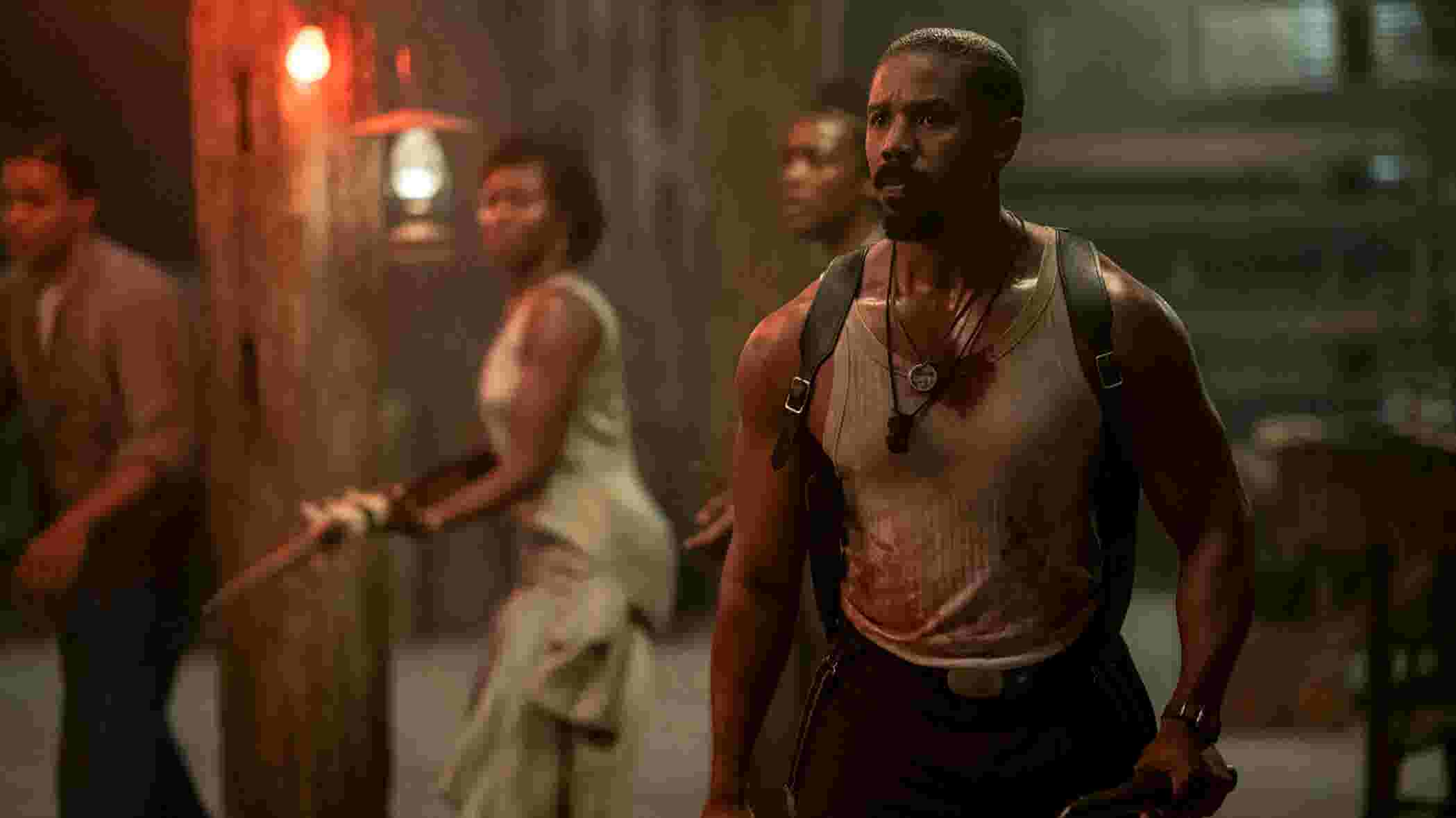
'Sinners': A vampire wants to crash the party in Ryan Coogler filmMovies
‘Sinners’: A vampire wants to crash the party in Ryan Coogler filmMovies
-

Olivia Munn says postpartum was ‘more difficult’ than breast cancer
Olivia Munn had a hysterectomy as part of breast cancer treatment
Actress Olivia Munn announced that she has had “an oophorectomy and hysterectomy. I took out my uterus, fallopian rubes, and ovaries.”
unbranded – Entertainment
Olivia Munn is revealing more details about her health difficulties over the past few years.
The “Newsroom” alum is set to star in the Apple TV series “Your Friends & Neighbors,” premiering Friday, and opened up to Self magazine about returning to acting after yearslong health struggles.
In a story published Thursday, Munn told Self that after having 5-year-old son Malcolm, she “didn’t even have the ability to fake it” after “feeling very depressed” during her “brutal” postpartum journey. Due to the rocky post-birth process, Munn made the decision to welcome daughter Méi with comedian John Mulaney through surrogacy.
Last May, Munn got candid in a Vogue interview about how she also underwent a hysterectomy amid her breast cancer battle. The actress and Mulaney were married last July, and in September, they welcomed Méi.
“It was devastating for me not to be able to carry (Méi). I loved carrying my son (Malcolm),” Munn told Self.
Munn said that during her postpartum journey, “my eyes pop open at 4 a.m. I’m gasping for air. I get the tightness in my chest, and it’s like that all day long. It felt like the end of the world. … It was like when you watch a horror movie – the worst, scariest horror movie you can think of – that’s how my body felt.”
She added: “I would have to sometimes hold John’s arm from room to room. It was physical, almost as if I had sprained my knee.” The “Daily Show” alum told Self that she “could not make any breast milk,” and that “I think (that) kicked off the anxiety.”
“When you stop breastfeeding immediately, your hormones drop, and postpartum can come in like a tornado. And I didn’t clock any of that and I didn’t tell anybody about that,” Munn continued. “Then it was like I fell off a cliff, and I was just falling and falling and falling and falling. It was more difficult than going through cancer.”
Olivia Munn, John Mulaney still keep in touch with surrogate
The power-couple parents found their surrogate, who lives in Massachusetts, through an agency. Munn said that “the surrogate’s still in our life, she was a better pregnant woman than I ever could have been.”
“First of all, she doesn’t know any celebrities,” Munn said, telling Self the duo valued one thing most in their search: “Above everything else, I just wanted her to be kind.”
According to Munn, the surrogate is “an incredible mother, an incredible human being, an incredible friend, just wonderful.”
“I needed (her) to understand that I needed to go this route. It wasn’t for superficial reasons or because I wanted to put my work first. I’m not saying that any of those reasons aren’t valid for those people. And I’m not judging anyone who makes those decisions based on that, but I needed her to understand this would be hard for me,” Munn added.
Contributing: Brendan Morrow
-
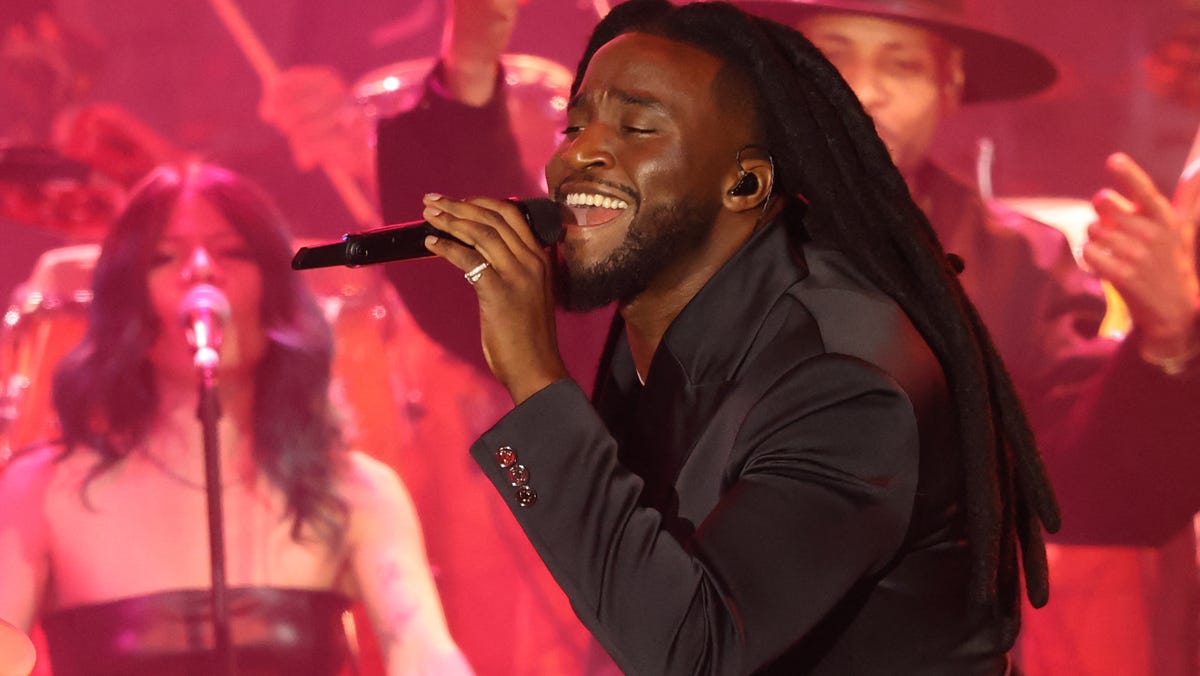
Shaboozey talks recording process with Beyoncé for ‘Cowboy Carter’
Beyoncé released ‘Cowboy Carter’ album one year ago: A look back
It’s been one year since Beyoncé released her eighth studio album, “Cowboy Carter.” Here’s a look back at the album’s impactful year.
- Shaboozey discussed his collaboration with Beyoncé on her album “Cowboy Carter” in an interview on “The Rebecca Judd Show.”
- He revealed that he wasn’t in the studio with Beyoncé during the recording process but recorded his parts separately.
- Shaboozey expressed his appreciation for Beyoncé keeping his original recordings intact on the final tracks.
- He also highlighted his own success with “Tipsy (A Bar Song),” which broke records on the Billboard charts.
Shaboozey is giving fans more insight into his historic collaboration with Beyoncé, which became the start to what proved to be a banner year.
The “Cowboy Carter” collaborator appeared on the latest episode of “The Rebecca Judd Show on Apple Music 1,” where he opened up about his breakthrough year in 2024, being featured on Beyoncé’s latest album, his hopes for the future and more.
Shaboozey is featured on two songs, “Spaghettii” and “Sweet Honey Buckiin,’” from Beyoncé’s eighth studio album “Cowboy Carter,” which she released March 29, 2024. Beyoncé’s hit “Spaghettii,” which also features country music pioneer Linda Martell, was nominated for best melodic rap performance at the 2025 Grammy Awards.
During the interview, Judd asked Shaboozey about the recording process with the 35-time Grammy-winning singer. He said he wasn’t actually in the studio with Beyoncé.
“I know how it gets, you want to be locked in and focused when you’re finishing your album,” he said. “I think it was that point where it’s like all the songs are done and you want to get the collaboration. So I wasn’t able to be in the room with her then, but I was right next door. I ran into Raphael Saadiq and The-Dream, and everybody was in there. Just being in your own room, just super-focused and super just getting it done.”
He said he recorded his two tracks over two days.
“I remember when I did ‘Spaghetti,’ I looked at the engineer, I was like, this is crazy,” he said. “I was like, this is the one right here. I feel like everyone else maybe liked the other one, but I was like, nah, she’s going to hear this one and get it. You know what I mean? And I feel like she probably heard it and got it.”
He said his recordings weren’t changed in the production process.
“Everything I recorded, they kept in there, which I thought was beautiful,” he said. “I’m really huge on respecting an artist, I think everything I did, they just kept it in there.”
And it’s clear the collaboration had a lasting impact on the Nigerian-American singer-songwriter with him calling it his favorite moment of last year.
The same year, Shaboozey made history with his own smash hit “Tipsy (A Bar Song).” The record-breaking tune became the longest-leading No. 1 on Billboard’s Hot 100 chart by a solo artist. Shaboozey also made history as the first Black male artist to top that chart and and Billboard’s Hot Country Songs chart simultaneously, amongst many other accolades and firsts.
The “Tipsy” singer wrapped the year with five nominations at the 2025 Grammys, where he performed. And he was sure to speak about the hit tune, too.
“I think when you listen to the song, it definitely has that emotion in there,” he said. “People can relate to that.”
The full interview is available on Apple Music.
Follow Caché McClay, the USA TODAY Network’s Beyoncé Knowles-Carter reporter, on Instagram, TikTok and X as @cachemcclay.
-
James Toback to pay $1.68 billion to women after sexual assault trial
Actor Russell Brand charged with rape and sexual assault of four women
The Metropolitan Police charged comedian Russell Brand with rape, indecent assault, oral rape and two counts of sexual assault.
A judge is ordering director James Toback to pay $1.68 billion in damages Wednesday, following a jury finding him liable in a sexual assault trial in New York, during which he was accused by 40 women of sex crimes over decades.
Attorneys for the accusers believe the sum represents the largest sexual assault civil suit verdict in state history.
“The jury’s verdict is about justice,” Brad Beckworth, an attorney for the accusers wrote in a statement to USA TODAY. “But more importantly, it’s about taking power back from the abusers — and their and enablers — and returning it to those they tried to control.”
Toback, who has previously denied any wrongdoing, was not reachable for comment. He did not have legal representation during the trial.
The screenwriter behind films like “Bugsy” and “Two Girls and a Guy,” Toback, 80, was one of the first major Hollywood names to be thrown out during the #MeToo reckoning over sexual violence in the entertainment industry nearly a decade ago. Along with the aspiring actresses listed in the suit, he has also been accused by big-name stars like Rachel McAdams, Selma Blair and Julianne Moore of on-set harassment.
“Several years ago, when the Me-Too movement began, I think many of us thought that we were past the point where men in positions of power would prey on women and try to steal their dignity and honor in exchange for allowing them to advance in their careers,” Beckworth continued. “We now know that the movement didn’t go far enough. We still have a lot of people in this country who abuse their power—and there are many more who turn a blind eye to it.”
James Toback allegations: Civil suit ends in trial victory for accusers
The lawsuit in New York, which loops together over a dozen named accusers and several anonymous ones, alleged that Toback over the course of 40 years used his “reputation, power and influence” to “lure young women … through fraud, coercion, force and intimidation into compromising situations where he falsely imprisoned, sexually abused, assaulted, and/or battered them.” Many of the women are now in their 30s and 40s.
Filed under the Adult Survivors Act, the lawsuit was allowed to proceed despite the large amount of time that had lapsed since many of the assaults by way of a one-year look-back window. The state opened the window in 2022 to allow accusers a brief opportunity to skirt the statute of limitations. That same look-back window was used by journalist E. Jean Carroll to sue President Donald Trump over an alleged assault during the mid-1990s.
The original suit also ensnared the Harvard Club of New York, where lawyers for the women allege Toback was a frequent customer, often taking his victims there for meals and drinks before attacking them. Because of his status as a prestige member, the club turned a blind eye to the abuse, the lawsuit alleged − the organization was ultimately not part of the trial.
Toback was a graduate of the Ivy League university and directed a 2001 dramedy about the school entitled “Harvard Man.”
McAdams and Blair both told Vanity Fair in 2017 that during the production of the movie Toback engaged in inappropriate sexual behavior, asking them to take their clothing off during auditions, masturbating in front of them or discussing personal pleasure habits and threatening them about speaking out.
Blair, who originally spoke to the Los Angeles Times anonymously, said she decided to come forward after Toback’s blanket denial.
“When he called these women liars and said he didn’t recall meeting them and that the behavior alleged could not be attributed to him, I just felt rage and an obligation to speak publicly now,” she told Vanity Fair.
“For decades, I carried this trauma in silence, and today, a jury believed me. Believed us,” Mary Monahan, the lead accuser in the case resolved Wednesday, told Variety. “That changes everything. This verdict is more than a number — it’s a declaration. We are not disposable. We are not liars. We are not collateral damage in someone else’s power trip. The world knows now what we’ve always known: what he did was real. And what we did — standing up, speaking out — was right.”
Contributing: Lorena Blas
-
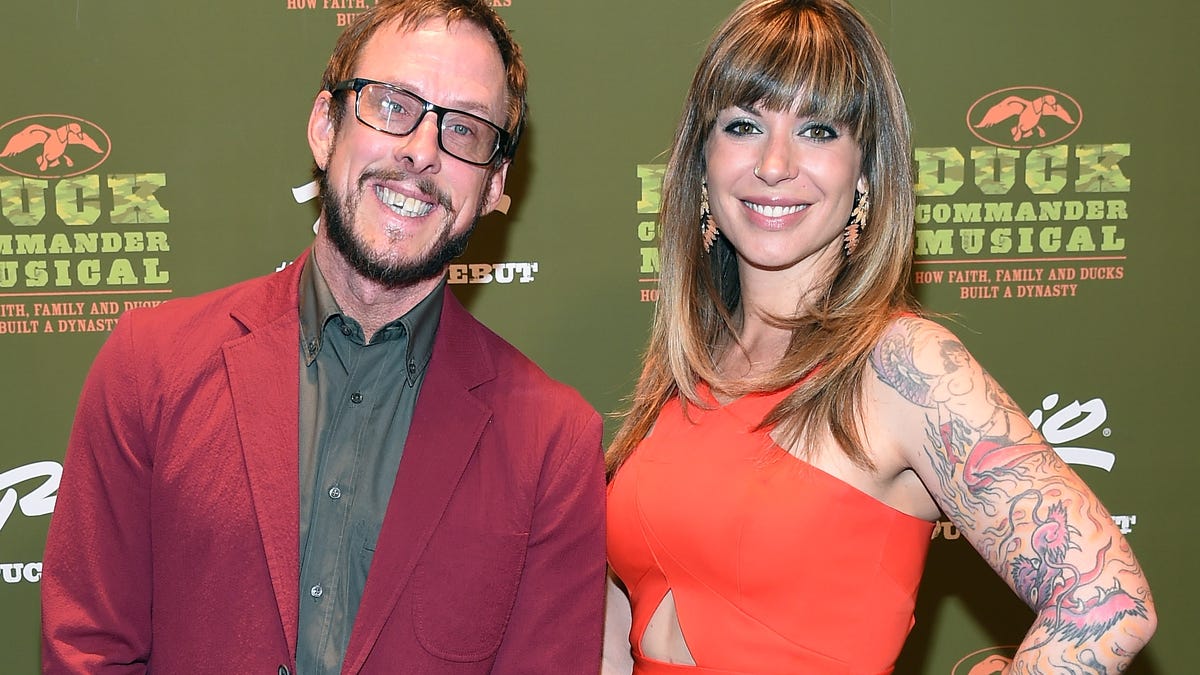
Who is Jillian Shriner? Meet author and wife of Weezer’s Scott Shriner
Woman shot by police was Weezer member’s wife
Jillian Shriner, wife of Weezer bassist Scott Shriner, was shot by LAPD officers in Eagle Rock, according to TMZ.
Fox – LA
Jillian Shriner, a bestselling author who is married to Weezer bassist Scott Shriner, is facing an attempted murder charge after police shot her in an altercation Tuesday.
The Los Angeles Police Department said in a press release that officers were pursuing three hit-and-run suspects Tuesday when they tracked one of them to the backyard of a house. As the officers arrived, they allegedly observed Shriner, 51, “armed with a handgun” in the yard of her own home nearby. She was not involved in the hit-and-run.
Officers ordered her to drop the handgun, but she refused, the LAPD claimed. Shriner allegedly pointed the handgun at officers and was shot by police before fleeing into her residence. She was later taken into custody and transported to the hospital, police said.
Author Jillian Lauren published books like ‘My Life in a Harem’ before shooting
Shriner, also known as Jillian Lauren, is the author of several books across multiple genres. In 2010, she published her memoir “Some Girls: My Life in a Harem,” which chronicled her time spent in the harem of Prince Jefri Bolkiah, brother of the Sultan of Brunei.
“At eighteen, Jillian Lauren was an NYU theater school dropout with a tip about an upcoming audition,” the book’s synopsis explains. “The ‘casting director’ told her that a rich businessman in Singapore would pay pretty American girls $20,000 if they stayed for two weeks to spice up his parties. Soon, Jillian found herself on a plane to Borneo, where she would spend the next eighteen months in the harem of Prince Jefri Bolkiah, youngest brother of the Sultan of Brunei.”
Shriner followed the bestselling book up in 2015 with another memoir: “Everything You Ever Wanted,” in which she discussed learning “the steadying power of love when she and her rock star husband adopt an Ethiopian child with special needs,” per her website. Her novel “Pretty,” about a woman left scarred after a car accident, was published in 2011.
Shriner also published a true crime book in 2023: “Behold the Monster,” for which she interviewed prolific serial killer Samuel Little. The Starz documentary “Confronting a Serial Killer” followed Shriner during the investigation. “I have access to him, so my deal with the devil is, you will not die alone if you tell me the truth,” she said in the documentary’s trailer.
In a conversation with The Crime Vault, Shriner said that when a detective told her about Little’s case, she “saw a chance to jump on an underreported story and to bring some heat to the failure of the justice system to protect the most vulnerable among us.”
Jillian Shriner, Weezer bassist Scott Shriner married 20 years ago
Shriner has been married to Scott Shriner, bassist for Weezer, since 2005. They share two children, both of whom they adopted.
In a TEDx talk in 2014, she shared that her son Tariku, whom she and her husband adopted from Ethiopia, was diagnosed with post-traumatic stress disorder. “He’s having these violent tantrums like 10 times a day, and we have to go to a therapist to learn how to contain him safely so that he doesn’t hurt himself and anyone else,” she said. Shriner describes herself as an adoption advocate on her website.
Contributing: KiMi Robinson
-
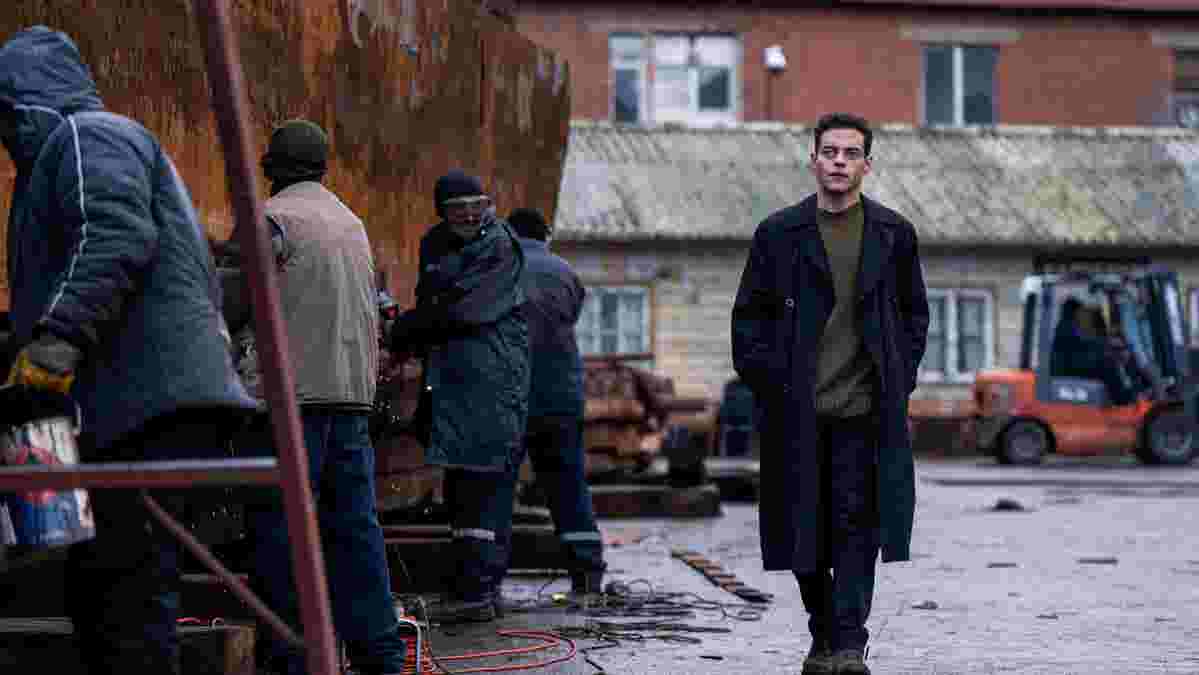
'The Amateur': See Rami Malek go from CIA nerd to assassinMovies
‘The Amateur’: See Rami Malek go from CIA nerd to assassinMovies
-
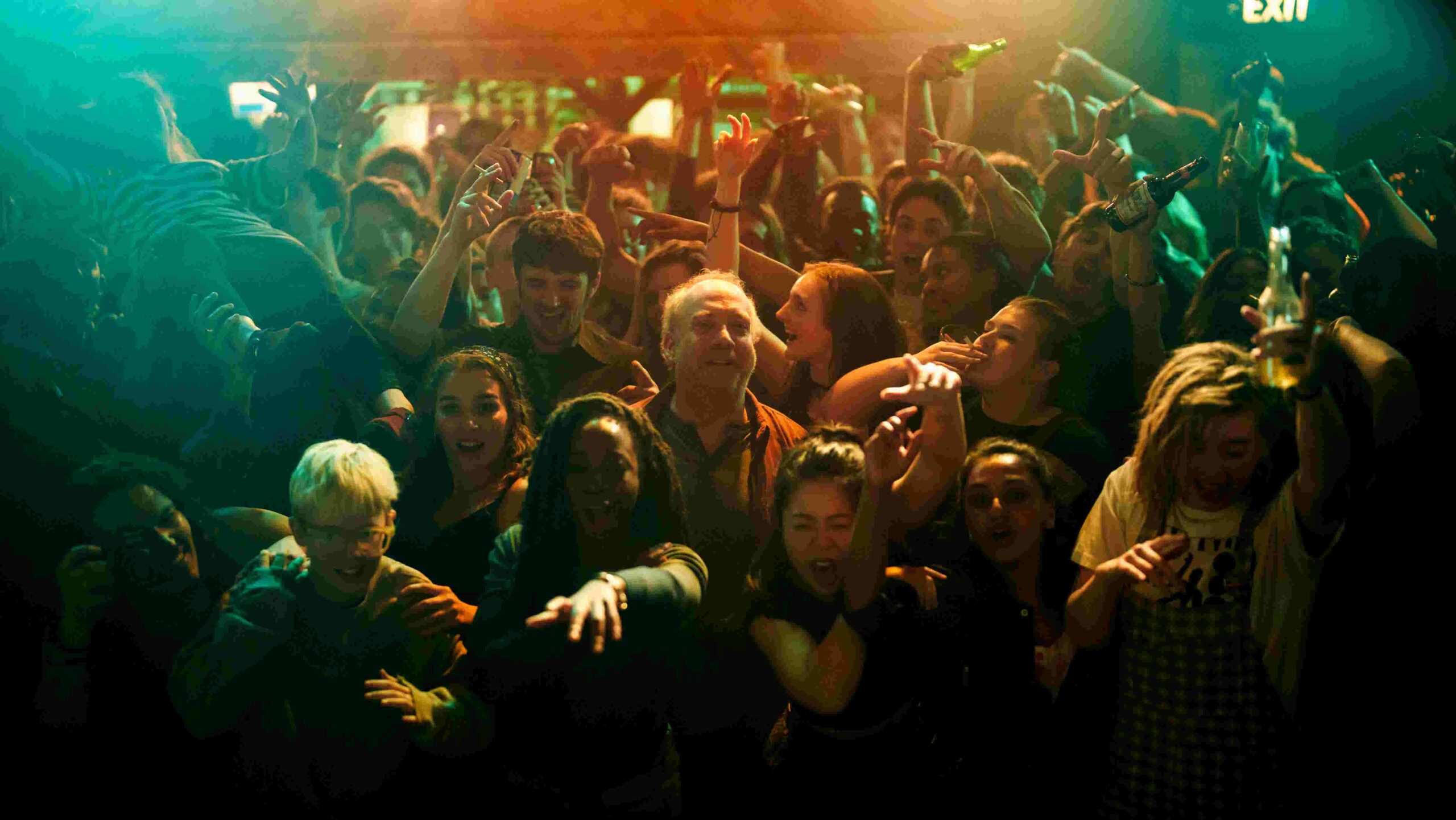
Paul Giamatti, Issa Rae headline new episodes of Netflix's 'Black Mirror'TV
Paul Giamatti, Issa Rae headline new episodes of Netflix’s ‘Black Mirror’TV
